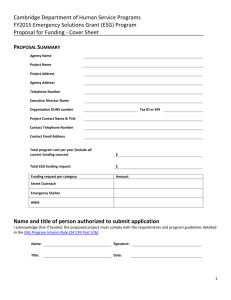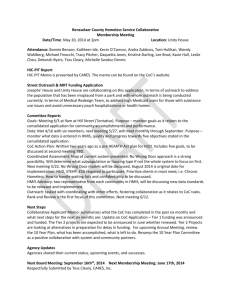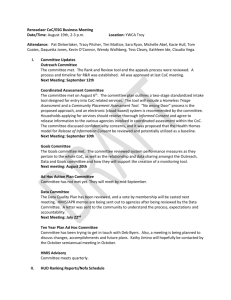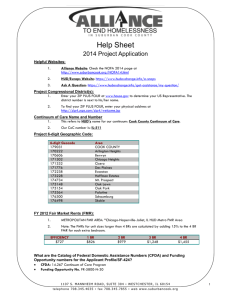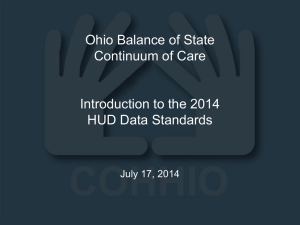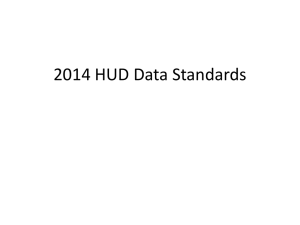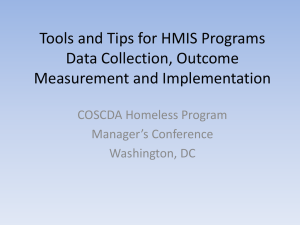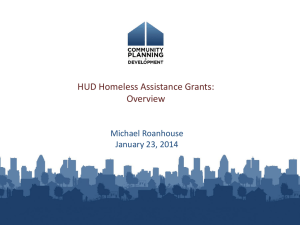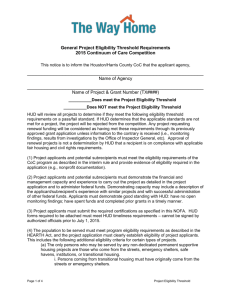Understanding and Implementing the HEARTH Act
advertisement
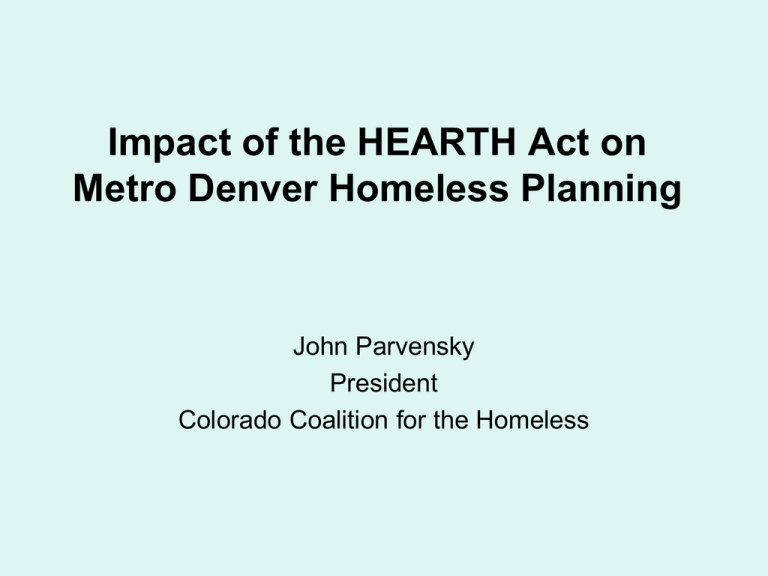
Impact of the HEARTH Act on Metro Denver Homeless Planning John Parvensky President Colorado Coalition for the Homeless HEARTH Act Overview • Reauthorizes HUD’s McKinney-Vento Homeless Assistance programs • Codifies Continuum of Care Process • Combines SHP and S+C Programs under one program with greater flexibility • Changes Emergency Shelter Program into Emergency Solutions Program 2 HEARTH Act Overview • New emphasis on… – Prevention – Rapid Re-Housing – Permanent supportive housing – Other effective strategies to end homelessness • Focus on CoC “System” level Performance • Continuum of Care is defined as the group organized to carry out the responsibilities of the HEARTH Act. 3 The CoC members include: • • • • • • • • • • • • • • • Nonprofit homeless providers Victim service providers Faith-based organizations Governments Advocates Public housing agencies School districts Social service providers Mental health agencies Hospitals Universities Affordable housing developers Law enforcement Organizations serving homeless veterans Homeless and formerly homeless persons 4 CoC Responsibilities • Hold meetings of full membership of continuum at least semi-annually • Invite new members to join the Continuum • Adopt written process to select a board to act on behalf of Continuum • Develop policies and procedures for compliance with CoC and HMIS requirements • Establish performance targets, monitor recipient performance, evaluate outcomes and take action against poor performers 5 CoC Responsibilities • Evaluate outcomes of ESG and CoC funded programs • Establish a centralized or coordinated assessment system that provides an initial comprehensive assessment of the needs of individuals and families for housing and services • Establish written standards for providing and prioritizing CoC assistance 6 CoC HMIS Responsibilities • Designate a single HMIS system for the Continuum • Designate an HMIS Lead • Approve privacy, security and data quality plans for HMIS • Ensure consistent participation of agencies in HMIS • Ensure HMIS complies with HUD requirements 7 CoC Planning Responsibilities • Coordinate the implementation of a housing and service system to meet the needs of homeless individuals, youth and families including: – Outreach and engagement – Shelter, housing and supportive services – Prevention strategies • Conduct Point in Time count biennially 8 CoC Planning Responsibilities • Conduct gaps analysis of homeless needs and available services • Provide information required to complete Consolidated Plans • Consult with State and local government ESG recipients on plan for allocating ESG funds • Jurisdictions required to coordinate with CoC in development of HUD Consolidated Plans 9 CoC Funding Process • Annual Competition through NOFA • Specific rating criteria that HUD must use in the competitive process is included in the statute: – – – – – – Performance Measures Planning Process Priorities Public and Private Funding Mainstream Programs Other Populations 10 Performance Measures • CoC Applicants will be rated in these community wide areas: – Length of time individuals and families remain homeless – Extent of recurrence of homelessness – Thoroughness in reaching homeless persons – Jobs and income growth for homeless persons – Overall reduction in the number of persons who become homeless 11 Performance Measures • CoC Plans will be rated in these areas: – Plan addresses needs of all relevant subpopulations – Plan sets quantifiable performance measures – Plan identifies funding sources and responsible entities for implementing strategies – Plan uses outcome data – Plan incorporates use of mainstream resources and other funding – Increased coordination with other federal, state and local agencies. 12 Consolidation of CoC Programs • Supportive Housing Program and Shelter Plus Care Programs combined into one program • More flexibility for mixing and matching eligible activities: – – – – – – New Construction, Acquisition and Rehab Rental Assistance and Leasing Operating Costs Supportive Services HMIS Administrative Costs 13 Program Components • Permanent Housing – Permanent Supportive Housing – Rapid Re-Housing • Up to 24 months of tenant based rental assistance with supportive services • Transitional Housing (up to 24 months) • Supportive Services Only • HMIs 14 Emergency Solutions Grants • Old Emergency Shelter Grant program changed to Emergency Solutions Grants • Adds Prevention and Rapid Re-Housing as eligible activities (at least 40% of funds) • States and Jurisdictions receiving ESG funds are required to coordinate with the Continuum of Care in award of ESG funds 15 Next Steps • Super NOFA expected in October 2012 • Funding for Fiscal Year same as last year • Increased competition for same level of funds • 1.25% of Funds available for CoC Planning • MDHI needs your help to make Continuum effective and successful 16
